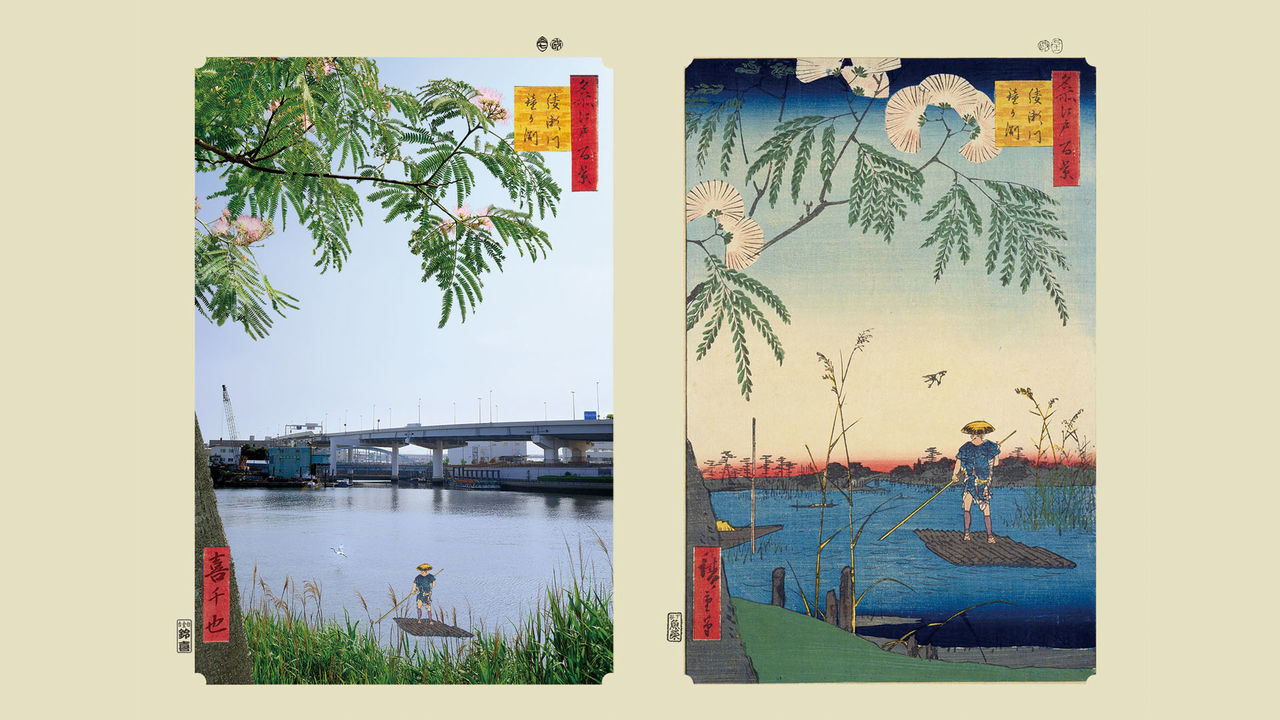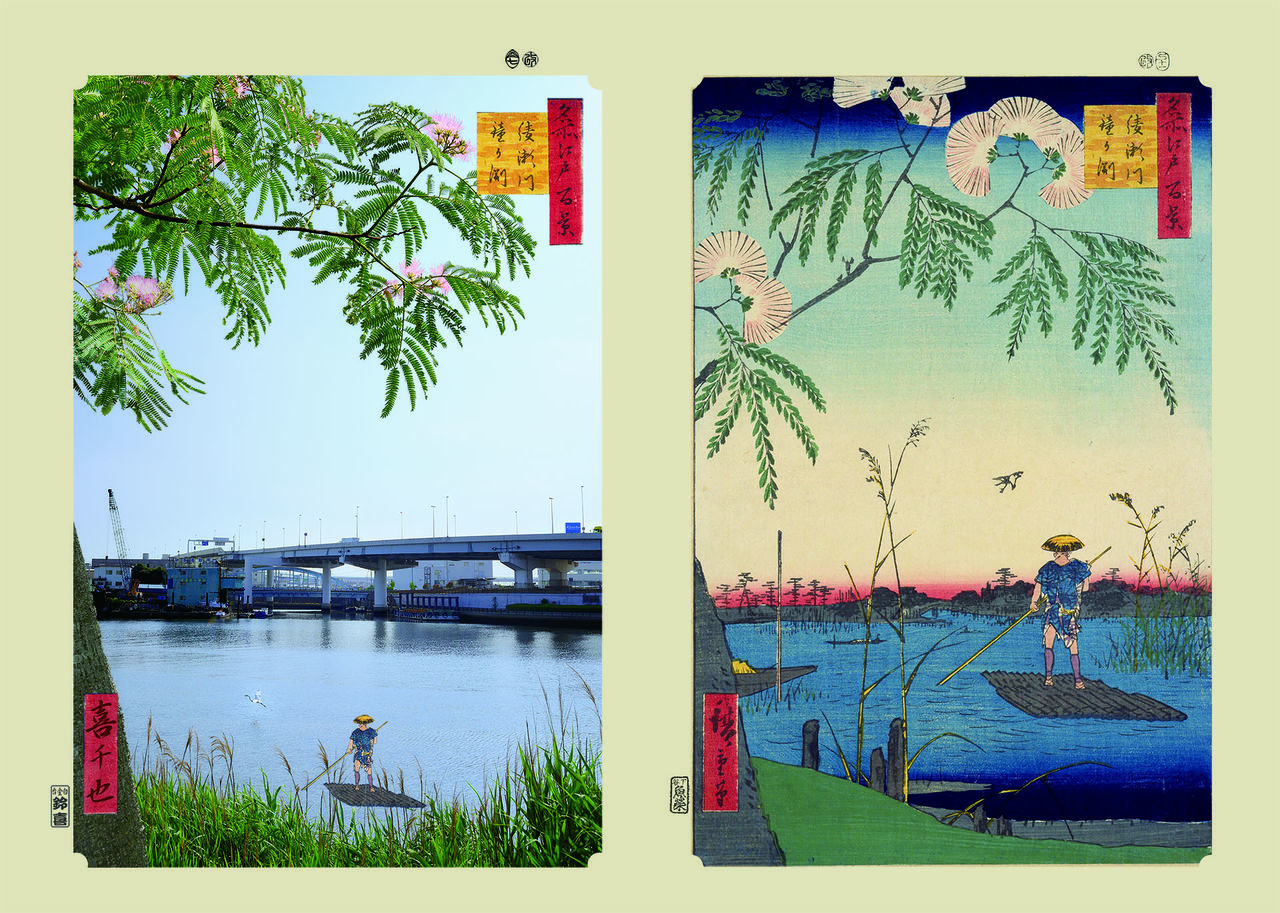
An East Tokyo Waterway: “Ayase River and Kanegafuchi”
Guideto Japan
- English
- 日本語
- 简体字
- 繁體字
- Français
- Español
- العربية
- Русский
One Hundred Famous Views of Edo by Kichiya, the Ukiyo Photographer: Today’s Tokyo Through Hiroshige’s Eyes
Meisho Edo hyakkei, known in the West as One Hundred Famous Views of Edo, was one of ukiyo-e artist Utagawa Hiroshige’s most celebrated works, influencing even Western artists like Van Gogh and Monet. Drawn in Hiroshige’s final years and published from 1856 to 1861, the series depicted the sights of Edo (as Tokyo was then known) through the changing seasons. Audiences around the world admired Hiroshige’s inventive use of bold compositions, bird’s-eye-view perspectives, and vivid colors. A century and a half later, “ukiyo photographer” Kichiya has set himself the task of recreating each of these views with a photograph taken in the same place, at the same time of year, from the same angle. Join us in this new series at Nippon.com on a tour of these “famous views” in Edo and modern-day Tokyo, guided by Kichiya’s artistry and his knowledge of old maps and life in Edo.
Taking on a Signature Hiroshige Composition
The Ayase River joins the Sumida River east of Senjū Bridge, right where the Sumida turns sharply south. Today the area takes its name from the Sumida, but until late in the Meiji era (1868–1912) it was still known as Kanegafuchi.
Hiroshige’s print depicts the sunrise behind the Ayase River as viewed from across the Sumida. The image is framed at the edges by the trunk and branches of a silk tree in a style Hiroshige was fond of. With the raftsman pushing off the reedy shore and egrets flying past in the background, the overall impression is less scenic splendor than lonely isolation.
I snapped my photographs on a clear morning during the rainy season as the silk trees were coming into bloom. Setting up in Shioiri Park on the bank of the Sumida, I pointed my camera in the direction of Kanegafuchi and waited, without much luck, for a great white egret to come flying by. The final image is a composite combining the trunk of one of the two silk trees in the park and the flowers of the other, although both were shot on the same day.
About the Location
Kanegafuchi is at a place where the Sumida River bends sharply southward, and the name is said to come from the resemblance to a carpenter’s steel square or sashi-gane, with fuchi implying deep water. Another explanation is based on a story of a temple that was moving by boat to a new location and lost its bell, or kane, overboard at the spot, never to be recovered.
During the Edo period (1603–1868), Kanegafuchi was known for its bush warblers and was also popular among falconers. Today, though, the old appellation remains only as a station on the Tōbu Skytree Line. However, it still lives on in the name of the well-known Japanese cosmetic brand Kanebō (the firm’s blue billboard is visible just beyond the expressway), which was founded here in 1889 as the Kanegafuchi Spinning Mill.
Location Kanegafuchi Station, 5-50-2 Sumida, Sumida
Access Kanegafuchi Station on the Tōbu Skytree Line
tourism Tokyo ukiyo-e One Hundred Famous Views of Edo by Kichiya kantō Sumida
